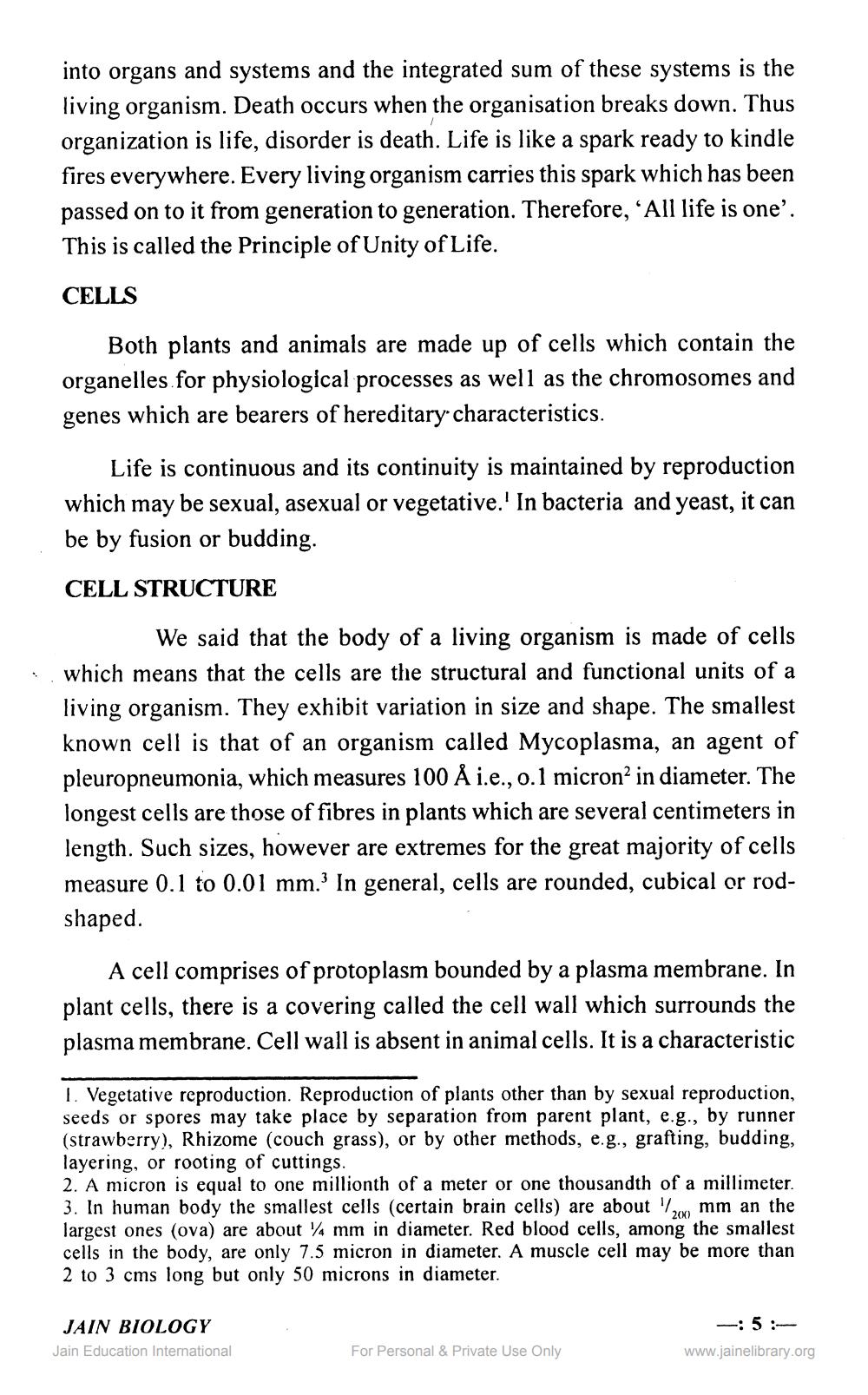________________
into organs and systems and the integrated sum of these systems is the living organism. Death occurs when the organisation breaks down. Thus organization is life, disorder is death. Life is like a spark ready to kindle fires everywhere. Every living organism carries this spark which has been passed on to it from generation to generation. Therefore, ‘All life is one'. This is called the Principle of Unity of Life.
CELLS
Both plants and animals are made up of cells which contain the organelles for physiological processes as well as the chromosomes and genes which are bearers of hereditary characteristics.
Life is continuous and its continuity is maintained by reproduction which may be sexual, asexual or vegetative.' In bacteria and yeast, it can be by fusion or budding.
CELL STRUCTURE
We said that the body of a living organism is made of cells which means that the cells are the structural and functional units of a living organism. They exhibit variation in size and shape. The smallest known cell is that of an organism called Mycoplasma, an agent of pleuropneumonia, which measures 100 Å i.e., 0.1 micron? in diameter. The longest cells are those of fibres in plants which are several centimeters in length. Such sizes, however are extremes for the great majority of cells measure 0.1 to 0.01 mm. In general, cells are rounded, cubical or rodshaped.
A cell comprises of protoplasm bounded by a plasma membrane. In plant cells, there is a covering called the cell wall which surrounds the plasma membrane. Cell wall is absent in animal cells. It is a characteristic
1. Vegetative reproduction. Reproduction of plants other than by sexual reproduction, seeds or spores may take place by separation from parent plant, e.g., by runner (strawberry), Rhizome (couch grass), or by other methods, e.g., grafting, budding, layering, or rooting of cuttings. 2. A micron is equal to one millionth of a meter or one thousandth of a millimeter. 3. In human body the smallest cells (certain brain cells) are about 7 mm an the largest ones (ova) are about 4 mm in diameter. Red blood cells, among the smallest cells in the body, are only 7.5 micron in diameter. A muscle cell may be more than 2 to 3 cms long but only 50 microns in diameter.
JAIN BIOLOGY Jain Education International
- 5www.jainelibrary.org
For Personal & Private Use Only




